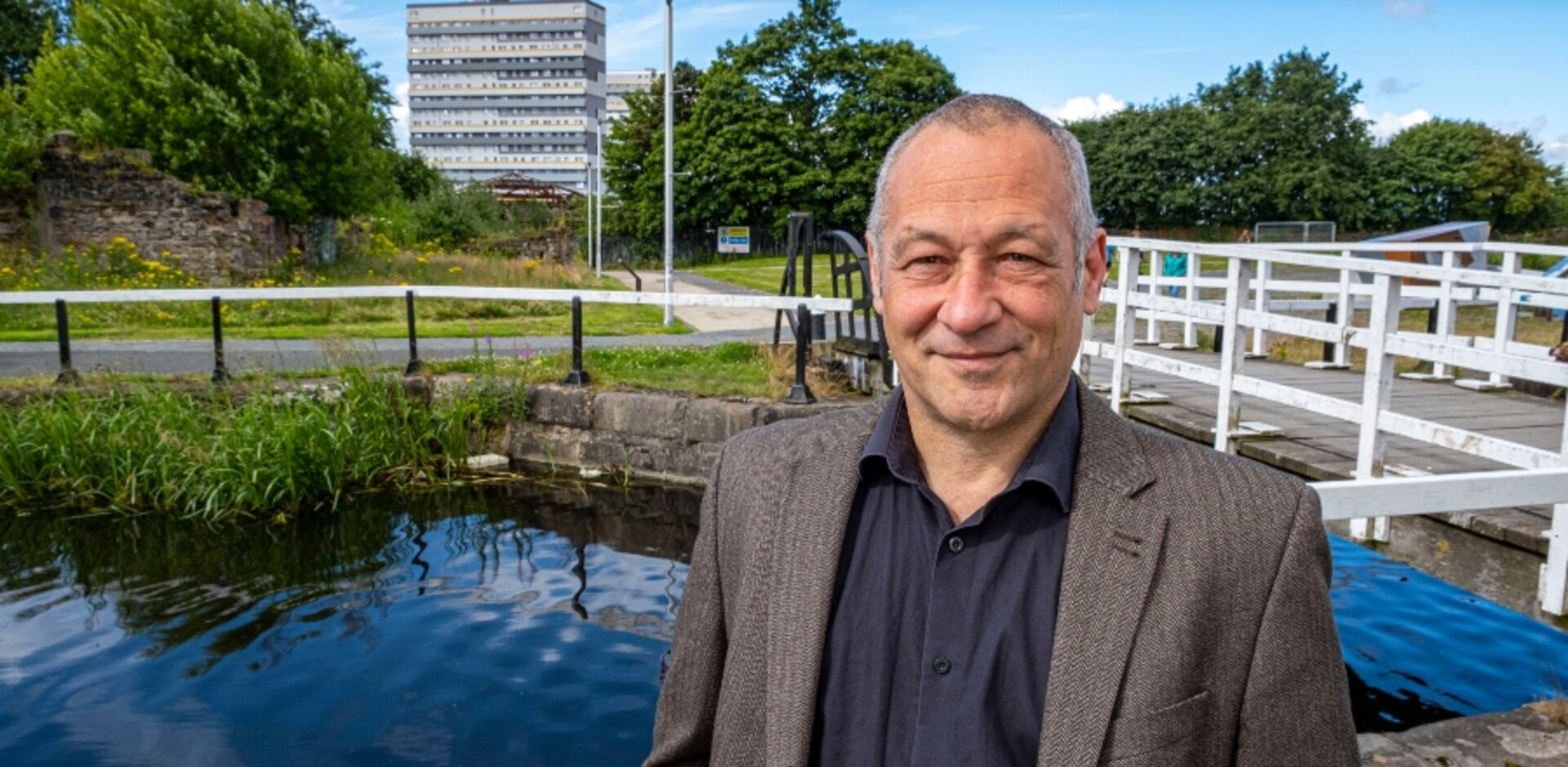Regeneration of canals and rivers can improve community health

The regeneration of canals and rivers in cities around the world can positively impact health and health inequalities – leading to a decrease in mortality rates in surrounding areas, according to new research.
In a global first, the study led by Glasgow Caledonian University in partnership with Scottish Canals and facilitated by The Data Lab, revealed mortality rates are lower in urban areas close to canals that have undergone major transformation and regeneration compared to areas further away. The research was carried out by GCU's Dr Zoe Tieges.
The research, which looked at the impact of regeneration along the Forth & Clyde Canal in North Glasgow – one of Europe’s most deprived areas - highlights the significant physical and mental wellbeing benefits that can be achieved from investing in regenerating urban waterways globally.
Sebastien Chastin, Professor of Health Behaviour Dynamics at Glasgow Caledonian University who led the research, said: “The world is becoming increasingly urban and this poses serious challenges, not only for our health but also the climate. Most cities in the world are built around water whether this is canals, rivers or coasts and these blue spaces are underused assets for public health.
“Our research focused on North Glasgow as this is one of the areas in Europe with a unique concentration of health issues and health inequalities. Furthermore, 18 years ago the waterways around Glasgow were entirely derelict and so we were able to track their effect on local people, from full disuse to full regeneration over almost two decades.
“This study demonstrates that urban blue spaces when they are developed, invested in and properly managed can have a substantial impact on population health around the world as the model is replicable in most cities elsewhere.”
Joe FitzPatrick, Minister for Public Health, Sport and Wellbeing said: “Access to outdoor space for recreation and physical activity is essential for our health and wellbeing. Scotland’s canals are a great asset and I welcome this research from Glasgow Caledonian University that suggests that canal regeneration in North Glasgow has been associated with a positive impact on health, health inequalities and a long-term reduction in mortality rates for communities living nearby.”
The reopening of Scotland’s canals in 2001 and subsequent Scottish Government funding over the last 18 years has been the catalyst to unlocking £1.53m of public and private investment across Scotland, transforming canal corridors and supporting some of Scotland’s most challenged communities.
Catherine Topley, CEO of Scottish Canals, said: “Scotland’s canals have been transformed over the past 20 years thanks to public and private sector investment, creating significant economic value in the form of new houses, jobs and business growth. This exciting new research shows that this investment which has transformed the Forth & Clyde Canal in North Glasgow has also had a major impact on the health and wellbeing of people who live near the water.
“Canal authorities around the world, from the United States to China and Europe, have all been trying to understand the relationship between regenerating our inland waterways and people’s health. We are delighted that Scotland now has the knowledge which can be exported to colleagues internationally, demonstrating once again that Scotland’s canals are at the forefront of innovation.”
The Data Lab, Scotland’s Innovation Centre for Data and AI, funded the research project which was built on a longstanding relationship between Glasgow Caledonian University and Scottish Canals.
Placing a focus on the Forth and Clyde Canal located in North Glasgow, the recent study analysed the effects of living within close proximity to the canal on mortality rates from 2001 to 2017.
Gillian Docherty OBE, CEO, The Data Lab, added: “Scotland’s canals offer a variety of unique health benefits to those living nearby, and for economically disadvantaged communities across the country where health inequality is an urgent issue, the regeneration of these disused urban blue spaces is vital as the data science produced from the recent research demonstrates.
“We’re proud to be involved in this groundbreaking project and look forward to witnessing how these initial findings can pave the way for future urban blue space regeneration in the years to come. It is another fantastic example of data being used as a force for good.”
